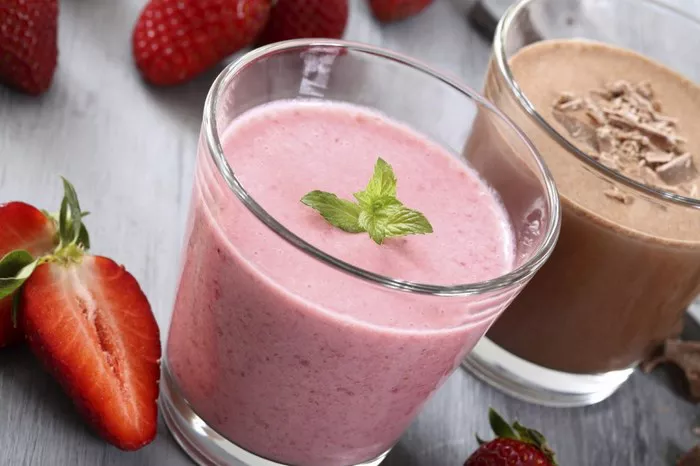Histamine intolerance is a condition characterized by an inability to properly metabolize histamine, a compound found in various foods and produced naturally by the body. When histamine levels exceed the body’s capacity to break it down, individuals may experience a range of symptoms, including headaches, hives, digestive issues, and more. In this article, we delve into the intricacies of histamine intolerance, providing insight into high-histamine foods to avoid, alternatives to consider, and practical tips for managing the condition.
Understanding Histamine Intolerance: Unraveling the Mystery
Histamine is a naturally occurring compound produced by the body and found in certain foods. It plays a vital role in immune response, inflammation, and neurotransmission. However, for individuals with histamine intolerance, the body struggles to properly metabolize and eliminate excess histamine, leading to symptoms ranging from mild discomfort to severe allergic reactions.
The Role of Histamine in the Body
Histamine is released by specialized cells in response to injury, allergic reactions, or other triggers. It acts as a signaling molecule, mediating various physiological processes such as vasodilation, inflammation, and gastric acid secretion. While histamine is essential for normal bodily function, excessive levels can contribute to adverse symptoms in susceptible individuals.
Understanding Histamine Intolerance
Histamine intolerance occurs when the body’s ability to metabolize histamine is impaired, leading to an accumulation of histamine in the bloodstream. This can result from a deficiency in the enzyme diamine oxidase (DAO), which is responsible for breaking down histamine in the digestive tract. Without adequate DAO activity, histamine levels can become elevated, triggering a cascade of symptoms associated with histamine intolerance.
High-Histamine Foods to Avoid: Navigating the Culinary Minefield
For individuals with histamine intolerance, certain foods are best avoided or limited to prevent symptoms from flaring up. These high-histamine foods include:
Fermented Foods: Aged cheese, sauerkraut, kimchi, kombucha, and other fermented foods can contain high levels of histamine due to the fermentation process.
Cured Meats: Sausages, salami, bacon, ham, and other cured meats undergo processing methods that can increase histamine levels.
Seafood: Tuna, mackerel, sardines, anchovies, and shellfish are rich sources of histamine, especially when not fresh.
Vinegar-Containing Foods: Pickles, olives, mayonnaise, and other foods containing vinegar can trigger histamine release in sensitive individuals.
Citrus Fruits: Oranges, lemons, grapefruits, and other citrus fruits are naturally high in histamine and may exacerbate symptoms.
Dried Fruits: Raisins, dates, apricots, and other dried fruits can have elevated histamine levels due to the drying process.
Aged or Fermented Alcoholic Beverages: Wine, beer, champagne, and other aged or fermented alcoholic beverages contain histamine and may trigger symptoms in susceptible individuals.
Leftovers: Histamine levels can increase in foods that have been stored for an extended period, making leftovers a potential source of histamine exposure.
Foods with Moderate Histamine Levels: Proceed with Caution
In addition to high-histamine foods, some foods contain moderate levels of histamine that may need to be limited depending on individual tolerance. These include:
1. Avocados
2. Spinach
3. Tomatoes
4. Eggplant
5. Chocolate
6. Nuts and seeds
Low-Histamine Food Alternatives: Finding Relief Through Diet
While navigating histamine intolerance can be challenging, there are plenty of low-histamine alternatives that individuals can enjoy without triggering symptoms. These include:
1. Fresh fruits and vegetables (excluding citrus fruits and tomatoes)
2. Fresh meats and poultry (excluding cured meats)
3. Fresh fish (excluding aged or canned varieties)
4. Gluten-free grains (such as rice, quinoa, and oats)
5. Dairy alternatives (such as almond milk or coconut yogurt)
6. Herbs and spices (excluding those high in histamine, such as cinnamon and cloves)
Individual Variations: Understanding Your Body’s Response
It’s important to recognize that tolerance to histamine varies among individuals, and what triggers symptoms in one person may not affect another. Keeping a food diary can help identify personal triggers and pinpoint which foods exacerbate symptoms. Additionally, consulting with a registered dietitian or healthcare professional can provide personalized guidance and support in managing histamine intolerance.
Tips for Managing Histamine Intolerance: Practical Strategies for Success
Managing histamine intolerance involves more than just avoiding trigger foods—it requires a holistic approach to diet and lifestyle. Here are some practical tips for managing histamine intolerance effectively:
Read Food Labels Carefully: Be vigilant about checking food labels for ingredients that may contain histamine or trigger histamine release.
Cook Fresh Meals at Home: Prepare fresh, homemade meals whenever possible to have more control over ingredients and cooking methods.
Maintain a Food Diary: Keep track of your diet and symptoms in a food diary to identify patterns and potential triggers.
Consult a Registered Dietitian: Seek guidance from a registered dietitian or healthcare professional who specializes in histamine intolerance for personalized advice and support.
Consider Other Factors: In addition to diet, factors such as stress, sleep, and environmental triggers can also impact histamine levels and symptoms. Taking steps to manage stress, prioritize sleep, and minimize exposure to environmental allergens can complement dietary strategies for managing histamine intolerance.
Conclusion: Empowering Yourself Through Knowledge and Action
In conclusion, understanding which foods to avoid with histamine intolerance is essential for managing symptoms and improving quality of life. By identifying trigger foods, opting for low-histamine alternatives, and adopting practical strategies for managing the condition, individuals can take control of their health and well-being. Remember that histamine intolerance is a highly individualized condition, and what works for one person may not work for another. By listening to your body, seeking professional guidance, and making informed choices, you can navigate histamine intolerance with confidence and find relief from symptoms.
[inline_related_posts title=”You Might Be Interested In” title_align=”left” style=”list” number=”6″ align=”none” ids=”6720,6708,6705″ by=”categories” orderby=”rand” order=”DESC” hide_thumb=”no” thumb_right=”no” views=”no” date=”yes” grid_columns=”2″ post_type=”” tax=””]

































